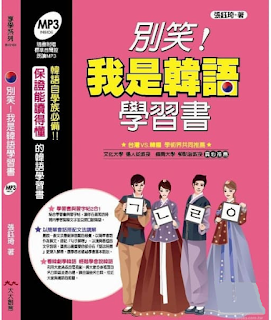As World Shifts Away from Meat, Pork Shortage Worries Vietnam
VOA News|East Asia Pacific
December 12, 2019 01:43 PM Ha Nguyen (source)
As World Shifts Away from Meat, Pork Shortage Worries Vietnam
在全球遠離肉類之際,豬肉短缺令越南擔憂
December 12, 2019 01:43 PM
Ha Nguyen
HO CHI MINH CITY —
Vietnam is being hit by a pork shortage, brought on by the scourge of swine fever and the U.S.-Chinese trade war, just before Tet, the Lunar New Year — a holiday in which pork plays a key role — approaches.
The swine fever virus has been spreading through Asia and devastating pig populations in a number of countries. It is estimated that one-fourth of the global supply of pigs has died this year. Meanwhile, the trade war has made imported U.S. pork more expensive in China, which has turned to Vietnam and other sources, cutting into the supply in Vietnam.
Vietnamese are concerned that the country could be short of .3 billion worth of pork by next month, just before Tet, the Vietnamese New Year.
Moreover the shortage comes as rising incomes mean pork has become a staple for more people across the nation who once could afford only a vegetarian diet. Pork is stuffed into bitter melon, caramelized in a clay pot, placed over egg noodles or otherwise added to innumerable other local recipes.
The issue has come up at multiple meetings of government officials, who are making it a priority to ensure supplies and keep prices affordable.
"We had six conferences to direct, distribute, and guide pig herds, spreading the model to farms, farm businesses, and provinces to apply biosecurity measures and use of inoculants to increase resistance, thus limiting African swine flu," Phung Duc Tien, deputy minister of agriculture and rural development, told reporters last month.
The government said this month that the number of pigs it had to cull was down 88% from May.
"Many localities have also effectively issued directives to supply pork to the market," Tien said.
In China it is joked that the measure of inflation, CPI, is actually the "consumer pork index," instead of consumer price index. A similar observation could be made in neighboring Vietnam, where pork is such a staple that locals frequently just use the generic term for meat, "thit," when they are talking about it.
Pork is taking on more importance now as the Lunar New Year soon approaches. For some people Tet is not Tet without the traditional foods, such as banh tet or banh chung, which is a snack of rice filled with ground pork and wrapped in banana leaves, as well as a common gift that families take pains to make themselves during the holiday.
To prevent a shortage, Vietnam is turning to foreign supplies. Many of them, however, are the less-preferable frozen pork. Many Vietnamese are used to purchasing chickens, frogs, or fish that are still alive at an open market to cook. Frozen meat is not quite the same.
This is not the first time pork has been an issue here. In the past two months Australia has cited swine flu as the reason it deported two Vietnamese nationals for carrying pork into the country. Swine flu is also political next door in China — the government excluded UBS Group AG from a bond deal after one of its senior economists made comments about the flu.
豬肉在越南新年「Tet」扮演著關鍵角色。而在農曆新年(Lunar New Year)來臨前夕,越南(Vietnam)正飽受豬瘟(swine fever)禍害(scourge,註 1)及中美貿易戰(trade war)影響,面臨豬肉短缺的情形。
豬瘟病毒正在亞洲(Asia)地區蔓延,並摧毀(devastating,註 2)許多國家的豬隻。據估計,今年(編按:2019 年)全球豬隻供應量中有 4 分之 1的豬隻死亡。於此同時,中美貿易戰使美國(U.S.)進口(import,註 3)豬肉的價錢在中國(China)變得較貴,中國因此轉往越南及其他國家進口豬肉,進而影響越南當地的豬肉供應量。
越南民眾擔心該國豬肉短缺(short,註 4)的狀況可能會在下個月(編按:2020 年 1 月)農曆新年來臨前達到高達 億元的缺口。
除此之外,該國豬肉短缺的情形發生在人們逐漸增加 收入之際。從前,他們只負擔得起(afford,註 6)素食飲食(diet),但有愈來愈多人開始以豬肉為主食(staple,註 5)。使用豬肉的料理包括苦瓜塞豬肉、陶鍋焦糖豬肉、豬肉雞蛋麵以及其他數不清的(innumerable,註 7)當地料理。政府官員在許多會議中提起豬肉短缺的狀況,並以確保供應量穩定及維持價錢合理(affordable)為優先考量。
越南農業與農村發展部(Ministry of Agriculture and Rural Development)副部長(deputy minister)馮德進(Phung Duc Tien )上個月(編按:2019 年 11 月)向記者表示:「我們召開了六次會議來確立引導(direct,註 8)、配送(distribute)和引領豬隻的模式,並將此模式推廣至各個農場、農業及省份,讓他們依照模式給豬隻接種疫苗、以增強抵抗力,使非洲豬瘟的疫情得到控制。」
政府機關表示它們這個月(編按:2019 年 12 月)需要宰殺(cull)的豬隻數量相較於五月降低了 88%。
「許多地方也有效地(effectively)向市場發布供應豬肉的指令。」馮德進表示。
在中國,人們戲稱用來衡量通貨膨脹的消費者物價指數(consumer price index,簡稱CPI),實際上應該是「消費者豬肉指數」才對。類似的情形也能在鄰近的越南被觀察到。在越南,豬肉是非常常見的主食,以至於當地居民經常直接以肉類的通稱「thit」來指豬肉。 隨著農曆新年的到來,豬肉現在變得愈來愈重要。對一些人來說,如果沒有圓筒粽(banh tet)或方形粽(banh chung)等傳統食物,越南新年就稱不上是越南新年了。兩種粽子是用香蕉葉包裹裝滿絞肉的米飯所做成的點心,也是年節期間家家戶戶會自己耗時心力製作的常見禮物。
為了避免食材短缺,越南逐漸轉向外國豬肉,但進口的大多是比較不受歡迎的冷凍豬肉。許多越南民眾習慣在傳統市場購買活雞、活蛙及活魚來烹調。冷凍肉品跟活肉料理起來不太一樣(not quite the same)。
這也並非是唯一一個和豬肉有關的問題。過去兩個月(編按:2019 年 11 月至 12 月)以來,澳洲(Australia)以豬流感為由將兩位帶豬肉入境的越南籍人士驅逐出境(deport)。豬流感在鄰近的中國也是一項政治議題。中國政府在瑞銀集團(UBS Group AG)一位資深經濟學家對豬流感提出評論(comment)後,將該集團排除在一項債券交易(bond deal)之外。
Language Notes
註 1: scourge 於本文為名詞,意指「災難,禍害;苦難的根源」;本字也可作動詞,意指「禍害;使苦惱,使痛苦」
註 2: devastating 於本文指「毀滅性的,破壞性極大的」;本字也常指「令人震驚的;令人煩亂的」;注意重音在第 1 音節
註 3: import 於本文為動詞,意指「進口」;本字也可作名詞,意指「進口商品」
註 4: short 於本文指「短缺的,缺乏的」;本字也常指「短的;矮的」
註 5: staple 於本文為形容詞,意指「主要的;常規的」;本字也可作動詞,意指「用釘書釘釘住」
註 6: afford 於本文指「買得起;有時間做」;本字也常指「提供;給予」
註 7: innumerable注意重音在第 2 音節
註 8: direct 於本文為動詞,意指「領導,指揮」;本字也可作形容詞,意指「坦率的,直接的」
BACK TO CONTENT
Check your comprehension!
Choose the BEST answer to each of the questions below. After you finish, highlight the parentheses to reveal the hidden answers.
1. ( A ) What can be inferred from the title of the article?
(A) People are cutting down on meat worldwide.
(B) People are consuming more meat worldwide.
(C) People are consuming more meat worldwide, including Vietnamese.
(D) People are cutting down on meat worldwide, including Vietnamese.
2. ( B ) According to the article, what are Vietnamese people concerned about?
(A) There has been a rise in the amount of leftover pork.
(B) There has been a lack of pork supply in the market.
(C) People have not been consuming pork due to swine fever.
(D) People have been overconsuming pork after an increase in their income.
3. ( B ) Which of the following statements is INCORRECT?
(A) Swine fever has caused a decline in pork supply.
(B) Frozen meat has become more popular in Vietnam. .
(C) Pork plays an important role in Vietnamese New Year.
(D) Pork is a common ingredient in many Vietnamese dishes.
編譯:外語教學暨資源中心 編輯小組
|

 Read more on VOA.
Read more on VOA.







